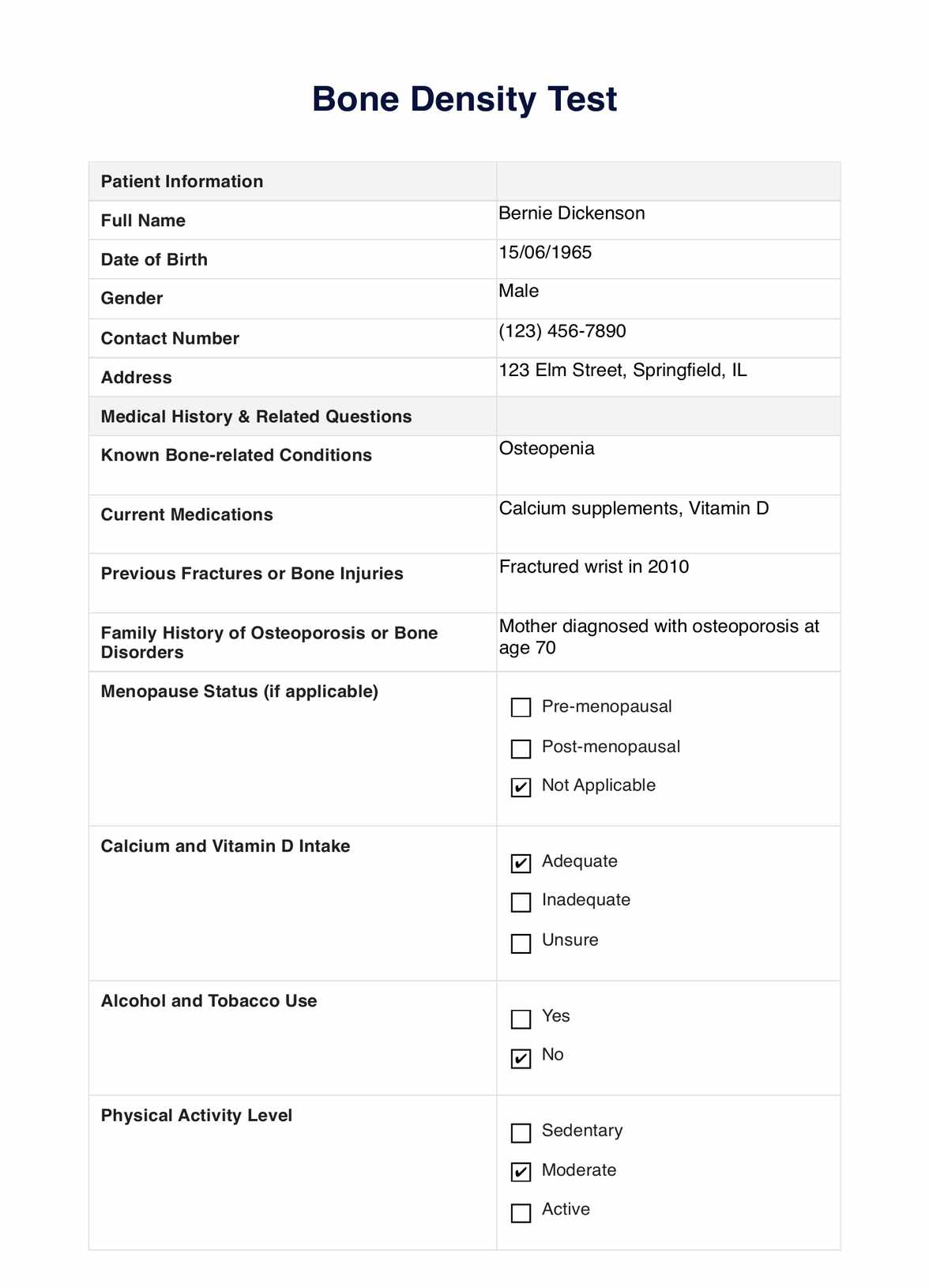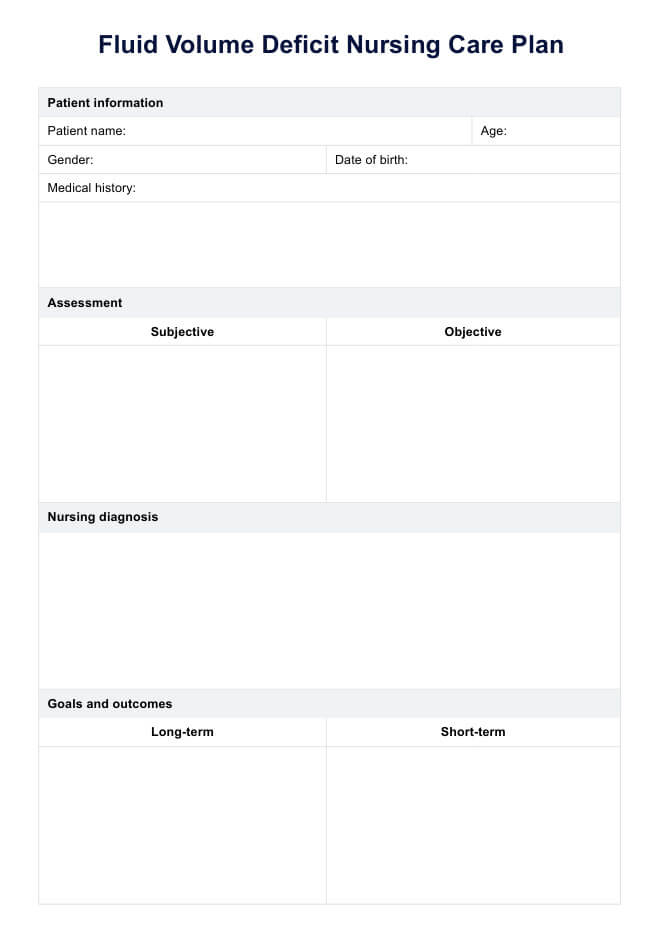Bone Density
Discover the benefits of using Carepatron for bone density analysis. Accurate, secure, and user-friendly—the top choice for healthcare professionals!


What Is A Bone Density Test?
Specific tests stand out in medical diagnostics for their profound impact on patient care. Enter the , a pivotal tool that's as essential as it sounds. At its core, this test is our window into the strength and health of bones, offering insights that can be life-changing for many.
Now, you might wonder, why all the emphasis on bones? Well, bones are our body's foundational framework. They support us, protect our vital organs, and work harmoniously with muscles to enable movement. But like any foundation, they need regular check-ups to ensure they're robust and resilient.
A Bone Density Test, also known as Dual-Energy X-ray Absorptiometry (DEXA), gauges the amount of calcium and other minerals packed into a segment of bone. The results can help healthcare professionals diagnose or assess the risk of osteoporosis, a condition where bones become brittle and fragile. It's like a weather forecast for bones, predicting potential storms (fractures) and helping us take preventive measures.
For healthcare professionals, understanding this test is paramount. It's not just about diagnosing osteoporosis; it's about proactive care, early intervention, and guiding patients toward bone health. After all, in the world of healthcare, prevention is often the best cure.
So, if you're keen to delve deeper into the intricacies of the Bone Density Test and understand its real-world applications, you're in the right place. Let's embark on this enlightening journey together.
Bone Density Template
Bone Density Example
How To Use the Bone Density Test
Navigating the realm of medical diagnostics can be intricate, but with the proper guidance, the process becomes seamless. The Bone Density Test, while comprehensive, is straightforward when approached step-by-step. Here's a breakdown of how healthcare professionals can effectively administer this pivotal assessment:
Preparation
Begin by explaining the procedure to the patient, ensuring they understand the purpose and process of the test. Verify that the patient has not taken calcium supplements for at least 24 hours before the test. Ensure the patient is wearing comfortable clothing, free of metal objects like zippers or buttons.
Patient Information Collection
Gather all necessary patient details, including name, date of birth, contact information, and address. Document any known bone-related conditions and current medications.
Medical History & Related Questions
Delve into the patient's medical history, focusing on previous fractures or bone injuries. Discuss family history concerning osteoporosis or other bone disorders. Assess lifestyle factors such as calcium and vitamin D intake, alcohol and tobacco use, and physical activity levels.
Conducting the Test
Position the patient on the examination table, ensuring they are comfortable. Calibrate the DEXA machine and select the appropriate test site (e.g., lumbar spine, hip). Administer the scan, which typically takes between 10 to 30 minutes.
Interpreting the Results
Analyze the T-score and Z-score values, comparing them to standard ranges. Provide a comprehensive interpretation based on the scores, considering the patient's age, gender, and medical history.
Post-Test Recommendations
Discuss the results with the patient, offering insights into their bone health. Provide recommendations tailored to the patient's needs, including lifestyle changes, medications, or follow-up tests.
In conclusion, the Bone Density Test is a powerful tool in the hands of a well-informed healthcare professional. Following this structured approach can ensure accurate results and optimal patient care.
What do the Results Mean?
Interpreting the results of a Bone Density Test is a crucial step in the diagnostic process. While the numbers and scores provide raw data, understanding their implications is vital for healthcare professionals and patients. Let's delve into the expected results and their significance.
T-score Results:
- Normal (-1.0 and above): Bones are of average density compared to young adults of the same gender.
- Osteopenia (-1.0 to -2.5): Bones are weaker than normal but not to the extent of osteoporosis. It's a warning sign that one might have a higher risk of osteoporosis.
- Osteoporosis (-2.5 and below): Bones are significantly weak and brittle, increasing the risk of fractures.
Z-score Results:
- Normal (-2.0 and above): Bone density is within the expected range for someone of the same age, gender, and size.
- Below Expected Range for Age (below -2.0): Bone density is lower than the average person in the same age group, which could cause concern.
It's essential to remember that while these scores provide a snapshot of bone health, they are just one piece of the puzzle. Other factors, such as age, medical history, and risk factors, are significant in the overall assessment.
In conclusion, the Bone Density Test offers invaluable insights into bone health. Still, its results should always be interpreted in the broader context of individual health profiles. A comprehensive understanding ensures that the proper preventive or corrective measures are taken, paving the way for optimal bone health.
Research & Evidence
Bone density tests, also known as bone mineral density (BMD) tests, have been a cornerstone in diagnosing and managing osteoporosis and other bone-related disorders. The history of this diagnostic tool traces back to the increasing awareness of osteoporosis as a significant public health concern, especially in aging populations. As osteoporosis and osteopenia prevalence grew, a reliable diagnostic method became paramount.
The foundation of the bone density test is rooted in extensive research and clinical studies. One such study, "Effects of Resistance Exercise on Bone Health," published in the journal Endocrinol Metab (Seoul) in December 2018, delves into the relationship between exercise and bone health. The study emphasizes the importance of resistance exercise (RE) in preserving bone and muscle mass. It highlights that bones and muscles are closely interconnected, and any therapeutic intervention should target both to ensure optimal health outcomes. The research also underscores the significance of mechanical load during exercise in stimulating osteogenic effects for bone mass accretion.
Furthermore, the World Health Organization (WHO) has set criteria for diagnosing osteoporosis and osteopenia based on BMD T-scores, emphasizing the global acceptance and reliance on bone density tests. Combining osteoporosis with sarcopenia (muscle loss) has led to the term 'osteosarcopenia,' further highlighting the interconnectedness of bone and muscle health.
In conclusion, the bone density test is not just a diagnostic tool but a culmination of years of research, clinical trials, and global health initiatives. Numerous studies, expert recommendations, and widespread medical use back its credibility.
Commonly asked questions
Carepatron combines an intuitive interface with advanced technology, ensuring accurate results while prioritizing user security and data protection.
Carepatron utilizes advanced algorithms and a vast database, guaranteeing that each test is analyzed precisely.
Absolutely. Carepatron implements top-tier encryption and data protection measures, ensuring the privacy and security of all user information.

















































































































